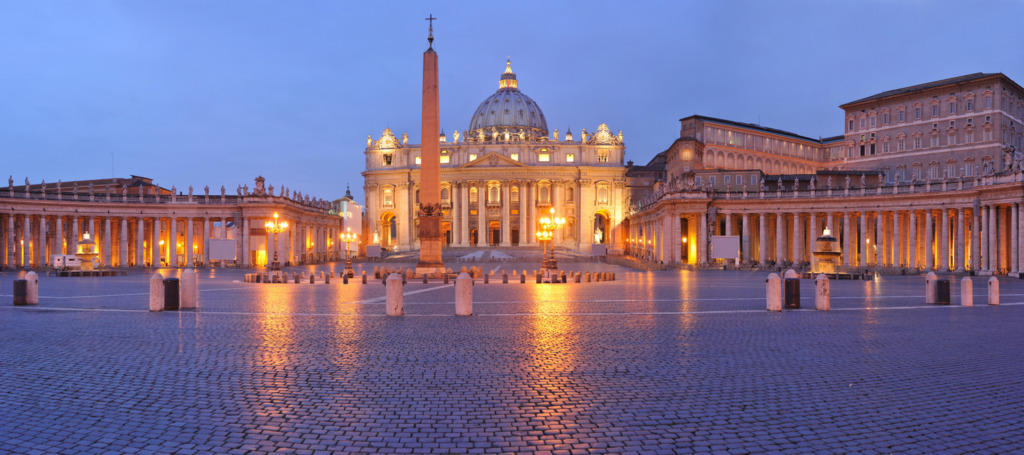Recent letters to the editor are full of vitriol but short on accuracy or understanding where certain historical issues are concerned. I write in connection with the attempt by Pope Francis to unify the Latin liturgy (“Traditionis Custodes,” 2021).
I have been writing and teaching papal history for 50 years, and I have not seen a pope called such ugly names since reading Protestant documents of the 16th century. I shall try to be civil.
The idea that there was a single liturgy until Vatican II called for a reform, and that the reform took shape in the Missal of Paul VI (1969; promulgated in 1970), is a myth. A recent writer referred to 1,600 years. I have no idea where that number came from.
There was neither a uniform liturgy nor an attempt to create one until Charlemagne attempted to impose uniformity in the Roman fashion. He had his palace scholars revise the then-known Gregorian Sacramentary. At that time — late eighth century —there were countless liturgical forms in use, with three chief strains associated with Popes Leo I, Gelasius I and Gregory I. No serious liturgical scholar believes that any of these popes actually composed a Sacramentary although all probably did some work of revision and modification.
Charlemagne’s world could not use the Gregorian they received because its sanctoral cycle did not comport with northern European usage. In any case, Charlemagne never managed to impose uniformity. In the late ninth century, Cyril and Methodius secured permission to worship in Old Church Slavonic instead of Latin or Greek.
In the 11th and 12th centuries, the papacy made some modest efforts to unify the liturgy. A Missale secundum curiae Romanae (Missal according to the Roman Curia) enjoyed considerable usage, largely owing to its adoption by the Franciscans after the 13th century.
In the last session of the Council of Trent (1545-1563), the council fathers, recognizing widespread variations in liturgical usage, tasked the pope with issuing new liturgical books. In 1570, Pius V in “Quo Primum” issued the missal that has long been called “Tridentine” even though Trent itself (Latin Tridentum meaning Tridentine) did not issue a missal.
There were discrepancies from the start because three different printers assumed the work of printing that missal. The decree permitted any province or order that had a liturgy demonstrably 200 years old or older to continue its use. Pius V’s missal was itself revised in 1588, 1759, 1919, 1951-55 and 1962. It is the 1962 missal that has been appealed to by the “Trads” in recent years.
There neither is nor was a “Mass of Gregory the Great.” The Gregorian Missal is not the Gregorian Sacramentary. It is a Novus Ordo missal — the missal of Pope Paul VI, with notation for Gregorian Chant in the commons and propers. That missal was published in 1990 by the monks of Solesmes.
Vatican II (1962-65) called for a new missal based on the work of the Liturgical Movement that arose in the 19th century with the work of Prosper Guéranger and others. Pope Paul VI heeded that call and issued his missal in 1969.
Those who rejected the work of Vatican II, on liturgy and much else, chiefly associated with the Society of Pius X and the schismatics around Marcel Lefebvre, sometimes used the “Tridentine” liturgy, often calling it the “Usus Antiquior,” a term that means “old” or “former” use but that has never had any official standing.
In his 2007 motu proprio “Summorum Pontificum,” Benedict XVI authorized what he called the “extraordinary form” under carefully prescribed circumstances. Care was not much in evidence, and serious differences emerged in the Catholic world.
In 2021, Pope Francis issued his own motu proprio, “Traditionis Custodes,” to rein in the use of the extraordinary form. What he tried to do was unify the liturgy, a dream that reached back to the eighth century.
To the extent that Catholic means universal, nothing could be more “Catholic” than a single liturgical usage. Yet, as another writer pointed out in the Jan. 24 Catholic Virginian, the “fullness of Roman Catholicism”— to quote another recent writer — has always been richness and variety.
It is not for me to say how the missals of 1962 and 1970 are to be seen as elements of that richness and variety. If one desires uniformity, then it must attach to the Novus Ordo of 1970.
If one wants Latin, then it is worth noting that the official text of the Novus Ordo is in Latin and is in the missal on every altar. It can be used without permission at any time. If one wants “smells and bells,” fiddle-back chasubles, altar rails, and priests and altars facing the other way around, then it is worth noting that those usages have come and gone countless times over the years. The Lord and his apostles would have reclined at table — Leonardo da Vinci notwithstanding — without any of the later accretions.
History is a resource and a burden for the Catholic Church. It should not be a source of division and acrimony.
Dr. Noble is the Andrew V. Tackes Professor Emeritus at the University of Notre Dame. He lives in Charlottesville.

